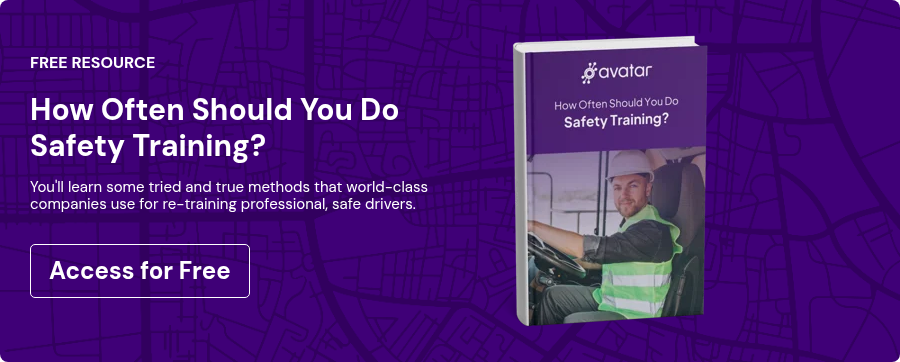Distracted driving is, simply put, risky. By definition, risk is the possibility of suffering harm or loss. You risk a lot when you drive distracted. You risk a ticket, losing your license, or causing an accident. You also put lives at risk. According to the National Highway Safety Administration, 3,166 people died in accidents related to distracted driving in the year 2017 alone.
The costs of distracted driving are high, grave, and numerous. However, as The Simple Dollar pointed out in an insightful article, the costs of distracted driving don’t stop there. Lissa Miller writes:
Distracted driving incidents can also increase your insurance rates by as much as 41%. The Zebra’s 2018 Distracted Driving Report showed that car insurance companies’ average insurance penalty has gone up nearly 8,000% since 2011. In fact, getting caught in a distracted driving incident can cost you hundreds or even thousands of dollars on your annual premium.
Hold Your Professional Drivers to Higher Standards
Everyone knows that distracted driving is dangerous. If you asked anyone whether or not it’s safe to text and drive, any driver would say no, it causes accidents. Of course, that doesn’t stop drivers from doing it. 64% of road incidents in the United States involve the use of a cell phone. If people know better, they sure don’t act like it.
Don’t fool yourself into thinking that your drivers are any better. Professional drivers are liable to make the same mistakes on the road as amateurs. These mistakes cause you lost time and money, but worse, they could cost someone their life. If you want to avoid accidents caused by distracted driving, or any accident for that matter, you need to properly train your drivers.
Three Proven Methods to Train Your Drivers
1. Self-Directed Study
If you want safe, professional drivers behind the wheel for you, consider enrolling your professional drivers in self-directed online study. Self-directed training courses, like A-Fleet: Professional Safe Driver Course, offer your employees the ability to take training on their own time and at their own pace. You can get them going on it first thing during orientation so they’re ready when they get behind the wheel.
2. On-Going Training
It’s important to train your drivers on safe, defensive driving up-front, but effective training doesn’t stop there. If you want your drivers to remember what they learned and consistently put it to use, you need on-going training. A-Fleet makes enrolling your students in on-going training easy. An A-Fleet subscription gives you access to valuable tune-ups that make training “sticky.” Not to mention, you’ll be able to employ remedial training to focus on problem areas for specific drivers.
3. In-Person Training
Despite living in the digital age, there’s plenty to be said for in-person training. Defensive driving programs like LLLC Instructor and Driver Certification offer high impact learning that positively affects driver behavior. The training is done by the best of the best at your company. The added benefit is that it creates a career path for your veteran drivers while offering mentorship opportunities to your new-hires, both of which can improve your retention.
It Takes More Than One Approach
If you want less tickets, lower insurance costs, and to protect the lives of your drivers and others on the road, training is essential. And, the best results come from a blended approach. By simultaneously utilizing self-directed and on-going training like A-Fleet with a certification model like LLLC, you ensure that your drivers are learning how to avoid accidents their entire careers.
Sign up for our newsletter
Get the latest articles on all things transportation delivered straight to your inbox.
Schedule a live demo

